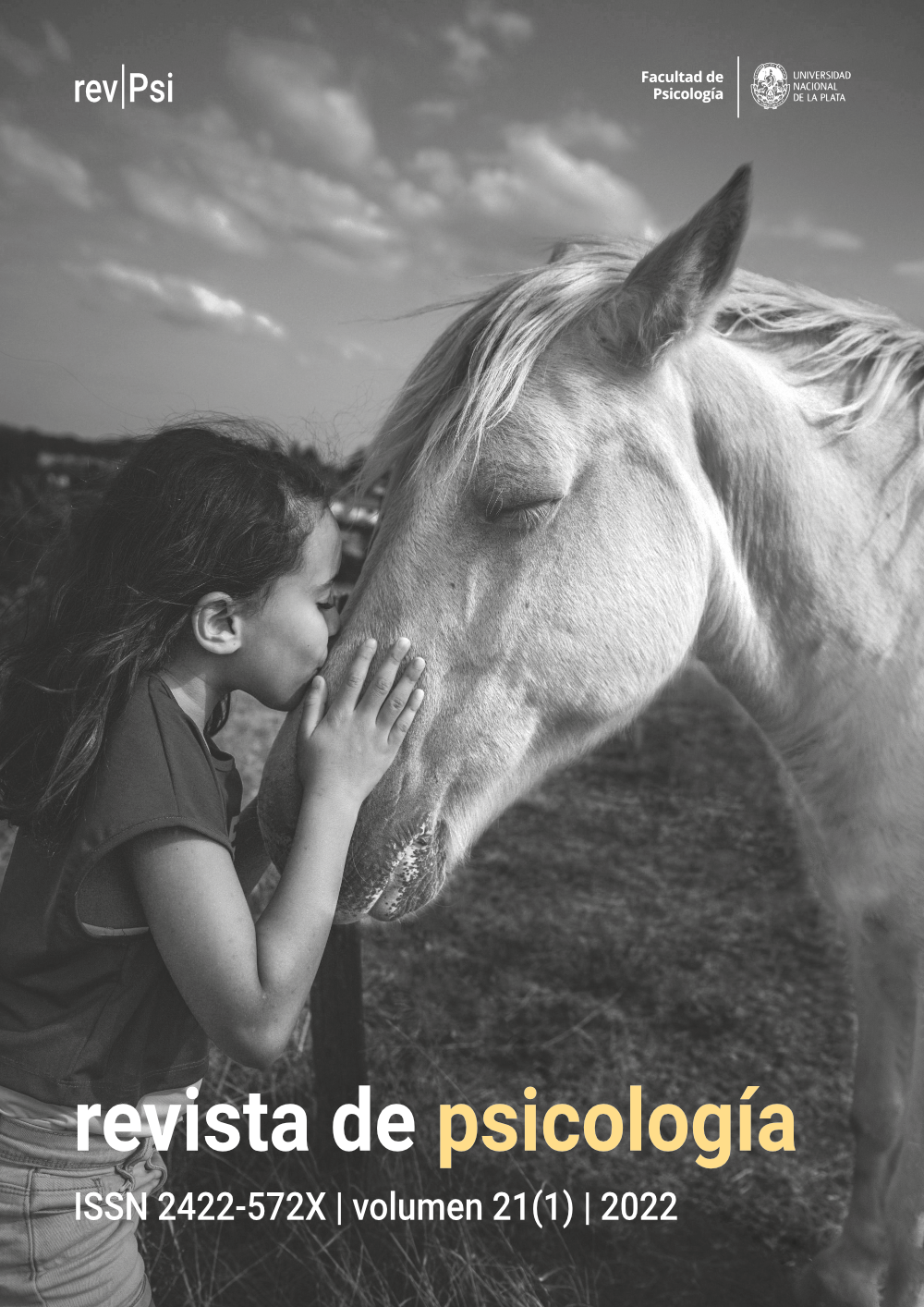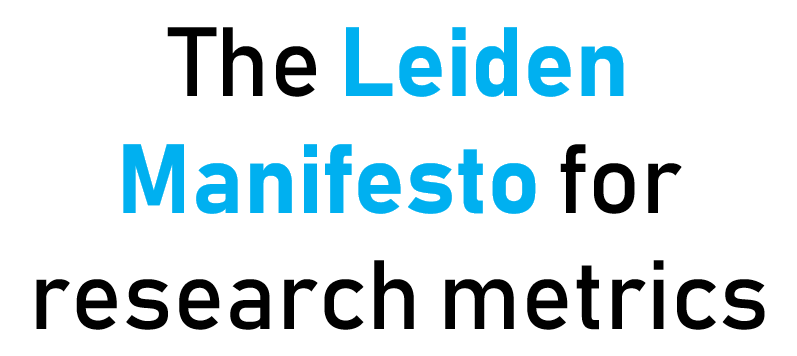O sexo e o temperamento influenciam as mudanças na expressividade emocional dos bebês chilenos? Um estudo longitudinal
DOI:
https://doi.org/10.24215/2422572Xe130Palavras-chave:
expressividade emocional, temperamento, sexo, infância, socializaçãoResumo
A expressividade emocional é relevante para o funcionamento saudável e, nos primeiros anos, tanto os aspectos evolutivos quanto os culturais a estão moldando. Este estudo avaliou a mudança na expressividade emocional em 99 crianças entre 12, 18, 24 e 30 meses de idade, considerando a capacidade de expressar prazer e frustração, e sua intensidade. A expressividade emocional das crianças foi avaliada em relação a atividades que provocavam prazer e frustração, e o IBQ-R-VSF foi aplicado para avaliar o temperamento. Observou-se que com o passar do tempo o número de crianças que expressaram frustração diminuiu significativamente. Além disso, a intensidade com que as crianças expressavam prazer e frustração também diminuiu significativamente. Foram criados perfis que combinavam o sexo e o temperamento das crianças, e que mostravam diferentes padrões de mudança na expressividade emocional. Esses resultados são discutidos na perspectiva da socialização das emoções positivas e negativas na cultura chilena.
Downloads
Métricas
Referências
Adimark (2000). El nivel socioeconómico ESOMAR; Manual de aplicación. www.microweb.cl/idm/documentos/ESOMAR.pdf
Akin, A., Satici, S. A., y Kayis, A. R. (2012) Emotional expressivity and submissive behavior. Journal of Education and Instructional Studies in the World, 2(1), 1-6.
Burns, K. C., y Friedman, S. L. (2012). The benefits of emotional expression for math performance. Cognition & Emotion, 26(2), 245-251. https://doi.org/10.1080/02699931.2011.577564
Calkins, S. D., y Mackler, J. S. (2011). Temperament, emotion regulation, and social development. En M. K. Underwood & L. H. Rosen (Eds.), Social development: Relationships in infancy, childhood, and adolescence (pp. 44–70). Guilford Press.
Camras, L. A., y Fatani, S. S. (2010). The development of facial expressions. Current Perspectives on infant emotions. En M. Lewis, J. M. Haviland-Jones y L. Feldman (Eds.), Handbook of emotions (3a ed, pp. 291-303). The Guilford Press.
Carstensen, L. L., Pasupathi, M., Mayr, U., y Nesselroade, J. R. (2000). Emotional experience in everyday life across the adult life span. Journal of Personality and Social Psychology, 79(4), 644–655. https://doi.org/10.1037/0022-3514.79.4.644
Chaplin, T. y Aldao, A. (2013). Gender differences in emotion expression in children: A meta-analytic review. Psychological Bulletin, 139(4), 735-765. https://doi.org/10.1037/a0030737
Chaplin, T. M., Cole, P. M., y Zahn-Waxler, C. (2005). Parental socialization of emotion expression: Gender differences and relations to child adjustment. Emotion, 5(1), 80-88. http://dx.doi.org/10.1037/1528-3542.5.1.80
Charbonneau, G., Bertone, A., Lepore, F., Nassim, M., Lassonde, M., Mottron, L., y Collignon, O. (2013). Multilevel alterations in the processing of audio–visual emotion expressions in autism spectrum disorders. Neuropsychologia, 51(5), 1002-1010. https://doi.org/10.1016/j.neuropsychologia.2013.02.009
Charlesworth, W. R., y Kreutzer, M. A. (2006). Facial expressions of infants and children. En P. Ekman (Ed.), Darwin and facial expression (1a ed, pp. 91-168). Malor Books.
Collier, G., y Collier, G. J. (2014). Emotional expression. Psychology Press.
Corrales, E. (2011). El lenguaje no verbal: Un proceso cognitivo superior indispensable para el ser humano. Revista Comunicación, 20(1), 46–51.
Dobbs, J. L., Sloan, D. M., y Karpinski, A. (2007). A psychometric investigation of two self-report measures of emotional expressivity. Personality and Individual Differences, 43(4), 693-702. https://doi.org/10.1016/j.paid.2007.01.010
Domes, G., Winter, B., Schnell, K., Vohs, K., Fast, K., y Herpertz, S. C. (2006). The influence of emotions on inhibitory functioning in borderline personality disorder. Psychological Medicine, 36(8), 1163-1172. https://doi.org/10.1017/S0033291706007756
Farkas, C., Santelices, M. P., y Himmel, E. (2011). Análisis desde una perspectiva evolutiva y cultural del uso de la comunicación gestual en infantes y pre-escolares, en la expresión y comprensión de los estados internos y su impacto en el desarrollo socio-emocional de los niños(as). Proyecto FONDECYT 1110087, Escuela de Psicología, Pontificia Universidad Católica de Chile, Santiago, Chile.
Farkas, C., y Vallotton, C. (2016). Differences in infant temperament between Chile and the US. Infant Behavior and Development, 44, 208-218. https://doi.org/10.1016/j.infbeh.2016.07.005
Fernández, I., Carrera, P., Sánchez, F. y Páez, D. (2001). Prototipos emocionales desde una perspectiva cultural. Revista Española de Motivación y Emoción, 4(8-9), 115-125.
Frith, C. (2009). Role of facial expressions in social interactions. Philosophical Transactions of the Royal Society B: Biological Sciences, 364(1535), 3453-3458. https://doi.org/10.1098/rstb.2009.0142
Gaias, L. M., Räikkönen, K., Komsi, N., Gartstein, M. A., Fisher, P. A., y Putnam, S. P. (2012). Cross-cultural temperamental differences in infants, children, and adults in the United States of America and Finland. Scandinavian Journal of Psychology, 53(2), 119-128. https://doi.org/10.1111/j.1467-9450.2012.00937.x
Han, H. S., y Thomas, M. S. (2010). No child misunderstood: Enhancing early childhood teachers' multicultural responsiveness to the social competence of diverse children. Early Childhood Education Journal, 37(6), 469-476. https://doi.org/10.1007/s10643-009-0369-1
Herndon, K. J., Bailey, C. S., Shewark, E. A., Denham, S. A., y Bassett, H. H. (2013). Preschoolers’ emotion expression and regulation: Relations with school adjustment. The Journal of Genetic Psychology, 174(6), 642-663. https://doi.org/10.1080/00221325.2012.759525
Hofstede, G. (2001). Culture's consequences: Comparing values behaviors, institutions and organizations across nations. (2a ed). Sage.
Holodynski, M., y Friedlmeier, W. (2006). Development of emotions and their regulation: A socio-culturally based internalization model. Kluwer Academic.
Izard, C. E. (2011). Forms and functions of emotions: Matters of emotion–cognition interactions. Emotion Review, 3(4), 371-378. https://doi.org/10.1177/1754073911410737
Kang, S. M., Shaver, P. R., Sue, S., Min, K. H., y Jing, H. (2003). Culture-specific patterns in the prediction of life satisfaction: Roles of emotion, relationship quality, and self-esteem. Personality and Social Psychology Bulletin, 29(12), 1596-1608. https://doi.org/10.1177/0146167203255986
Keller, H., y Otto, H. (2009). The cultural socialization of emotion regulation during infancy. Journal of Cross-Cultural Psychology, 40(6), 996-1011. https://doi.org/10.1177/0022022109348576
Kohut, S. A., Riddell, R. P., Flora, D. B., y Oster, H. (2012). A longitudinal analysis of the development of infant facial expressions in response to acute pain: Immediate and regulatory expressions. PAIN, 153(12), 2458-2465. https://doi.org/10.1016/j.pain.2012.09.005
Krakowski, M. I., De Sanctis, P., Foxe, J. J., Hoptman, M. J., Nolan, K., Kamiel, S., y Czobor, P. (2016). Disturbances in response inhibition and emotional processing as potential pathways to violence in schizophrenia: a high-density event-related potential study. Schizophrenia Bulletin, 42(4), 963-974. https://doi.org/10.1093/schbul/sbw005
Kring, A. M., Smith, D. A., y Neale, J. M. (1994). Individual differences in dispositional expressiveness: development and validation of the Emotional Expressivity Scale. Journal of Personality and Social Psychology, 66(5), 934-949. https://doi.org/10.1037/0022-3514.66.5.934
Lewis, M. (2010). The emergence of human emotions. En M. Lewis, J. M. Haviland-Jones, y L. Feldman (Eds.), Handbook of emotions (3a ed, pp. 304-319). The Guilford Press.
Losonczy-Marshall, M. (2008). Age differences in intensity of emotional expression between younger and older infants. Perceptual and Motor Skills, 107(3), 800-810. https://doi.org/10.2466/pms.107.3.800-810
Losonczy-Marshall, M. (2014). Stability in temperament and emotional expression in 1- to 3-year-old children. Social Behavior and Personality: An International Journal, 42(9), 1421–1430. https://doi.org/10.2224/sbp.2014.42.9.1421
MacNeill, L. A., y Pérez‐Edgar, K. (2019). Temperament and emotion. The Encyclopedia of Child and Adolescent Development, 1-12. https://doi.org/10.1002/9781119171492.wecad180
Martín-Baró, I. (1998). El fatalismo como identidad cognitiva. En I. Martín-Baró (Ed.), Psicología de la liberación (pp. 39-130). Trota.
Manstead, A., y Oatley, K. (2000). Gender and emotion: Social psychological perspectives. Cambridge University Press.
Mesman, J., Oster, H., y Camras, L. (2012). Parental sensitivity to infant distress: What do discrete negative emotions have to do with it? Attachment and Human Development, 14(4), 337–348. https://doi.org/10.1080/14616734.2012.691649
Morris, A. S., Silk, J. S., Morris, M. D., Steinberg, L., Aucoin, K. J., y Keyes, A. W. (2011). The influence of mother–child emotion regulation strategies on children's expression of anger and sadness. Developmental Psychology, 47(1), 213-225. https://doi.org/10.1037/a0021021
Muzard, A., Kwon, A. Y., Espinosa, N., Vallotton, C. D., y Farkas, C. (2017). Infants' emotional expression: Differences in the expression of pleasure and discomfort between infants from Chile and the United States. Infant and Child Development, 26(6), 1-12. https://doi.org/10.1002/icd.2033
Nelson, K., y Fivush, R. (2004). The emergence of autobiographical memory: a social cultural developmental theory. Psychological Review, 111(2), 486-511. https://doi.org/10.1037/0033-295X.111.2.486
Oster, H. (2005). The repertoire of infant facial expressions: An ontogenetic perspective. En J. Nadel y D. Muir (Eds.), Emotional development (pp. 261-292). Oxford University Press.
Patterson, G. R. (1976). The aggressive child: Victim and architect of a coercive system. En E. J. Mash, L. A. Hamerlynck y L. C. Handy (Eds.), Behavior modification and families (pp. 267-316). Brunner/Mazel.
Pérez Nieto, M. Á., y Redondo Delgado, M. M. (2006). Procesos de valoración y emoción: Características, desarrollo, clasificación y estado actual. REME, 9(22), 8-55.
Putnam, S. P., Helbig, A. L., Gartstein, M. A., Rothbart, M. K., y Leerkes, E. (2014). Development and assessment of short and very short forms of the Infant Behavior Questionnaire–Revised. Journal of Personality Assessment, 96(4), 445-458. https://doi.org/10.1080/00223891.2013.841171
Revueltas, A., Pale, M., y Ramírez, M. J. (2016). Análisis del reconocimiento de la expresión facial emocional en niños y adolescentes mexicanos. Revista de Psicología y Educación, 15(1), 53-74.
Rothbart, M. K. (2012). Advances in temperament. En M. Zentner y R. L. Shiner (Eds.). Handbook of temperament, (pp. 3-20). The Guilford Press.
Slobodskaya, H. R., y Kozlova, E. A. (2016). Early temperament as a predictor of later personality. Personality and Individual Differences, 99, 127-132. https://doi.org/10.1016/j.paid.2016.04.094
Smith, P. B., y Bond, M. H. (1993). Social psychology across cultures. Harvester.
Smith, J. D., Dishion, T. J., Shaw, D. S., Wilson, M. N., Winter, C. C., y Patterson, G. R. (2014). Coercive family process and early-onset conduct problems from age 2 to school entry. Development and Psychopathology, 26(4 Pt 1), 917–932. https://doi.org/10.1017/S0954579414000169
Sugg Basset, M. (2016). Influences of temperament, symbolic gesture, and caregiver beliefs on infant emotional expression [tesis de maestría inédita]. University of Arkansas.
Tortello, C., y Becerra, P. C. (2017). ¿Cómo se estudian las emociones en los niños? Técnicas conductuales y fisiológicas para evaluar las respuestas emocionales durante la infancia. Cuadernos de Neuropsicología, 11(3), 1-20. https://doi.org/10.7714/CNPS/11.3.401
Trommsdorff, G., y Cole, P. M. (2011). Emotion, self-regulation, and social behavior in cultural contexts. The Guilford Press.
Zubieta, E., Fernández, I., Vergara, A. I., Martínez, M. D., y Candia, L. (1998). Cultura y emoción en américa. Boletín de Psicología, 61, 65–89.
Downloads
Publicado
Como Citar
Edição
Seção
Licença
Copyright (c) 2022 Jorge Corral, Colomba Mahns, Fernanda Pereira, Carolina Coloma, Javiera Avilés, Chamarrita Farkas

Este trabalho está licenciado sob uma licença Creative Commons Attribution 4.0 International License.

Os autores que publicam neste periódico aceitam as seguintes condições:
- Autores mantém os direitos autorais e atribuir o direito de primeira publicação para a revista, com a obra registrada sob uma Licença de atribuição Creative Commons (CC-BY) , que permite que terceiros usem o que é publicado sempre que mencionarem a autoria do trabalho e a primeira publicação desta revista.
- Os autores podem fazer outros acordos contratuais independentes e adicionais para a distribuição não-exclusiva do artigo publicado na revista ESTA (por exemplo, incluí-lo em um repositório institucional ou publicá-lo em um livro), enquanto eles indicou claramente que o trabalho foi publicado pela primeira vez nesta revista.
- Autores são permitidos e encorajados a publicar seus trabalhos na Internet (por exemplo, em páginas institucionais ou individuais) antes e durante o processo de revisão e publicação, pois pode gerar alterações produtivas e maior e mais rápida difusão do trabalho publicado (ver The Effect of Open Access).




































